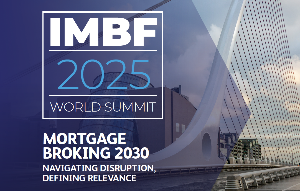
In the bank’s latest market focus, ANZ said it now believes there will be 50bps of cuts this year and has pencilled in 25bp cuts for June and September.
This would take the OCR to an all-time low of 2.0%.
Further, if the Reserve Bank’s core inflation measure stabilised in Q1, there could be a cut in April rather than June, the bank stated.
Earlier this month, ANZ chief economist Cameron Bagrie told mortgagerates.co.nz that he was not expecting an OCR cut but was “on notice”.
Since then, several factors have combined to change the bank’s thinking.
These are a moderation in domestic economic growth, a structural shift in funding costs, and the uncertain global economic situation, particularly in regards to China.
The bank added that the NZ dollar is too high, export prices – particularly dairy - are weakening and inflation expectations are weakening – although those elements had not tipped its thinking over the line.
Rather ANZ’s economists have less faith in the domestic economic story heading into the back half of the year.
They think growth looks set to fall below trend and the RBNZ needs growth to be at least at trend to drive medium-term inflation pressures higher.
“We doubt we will see it. To emphasise, we are not talking a downturn, just a more moderate rate of growth, closer to 2% than 3%.”
Moreover, the world has huge problems – which won’t just go away - to manage at present and the increase in the cost of credit was significantly complicating the situation, the bank said.
As a result, the bank has decided that the slew of risks and developments has now shifted sufficiently for OCR cuts to be on the cards.
“We are still constructive on the outlook for the New Zealand economy, but part of this is contingent on an appropriate relaxation in financial conditions via both the NZD and OCR settings over 2016,” it said.
There are positive forces - in the form of high migration, a booming tourism sector, a strong construction sector pipeline, and the fact the economy is growing – at work.
However, a growth backdrop that is even only modestly below trend is a problem for a central bank when inflation is already extremely low and inflation expectations are receding, the bank said.
“The RBNZ needs to be alert to signs of moderation in growth to below-trend rates. We think that is coming. And with that, a lower OCR becomes more likely than not.”
Westpac and ASB are both firmly in the OCR cut camp already. They have been predicting two further OCR cuts, to take the OCR to 2.0%, this year for some time.
The RBNZ is set to make its next announcement on the OCR on March 10.




Comments
No comments yet.
Sign In to add your comment